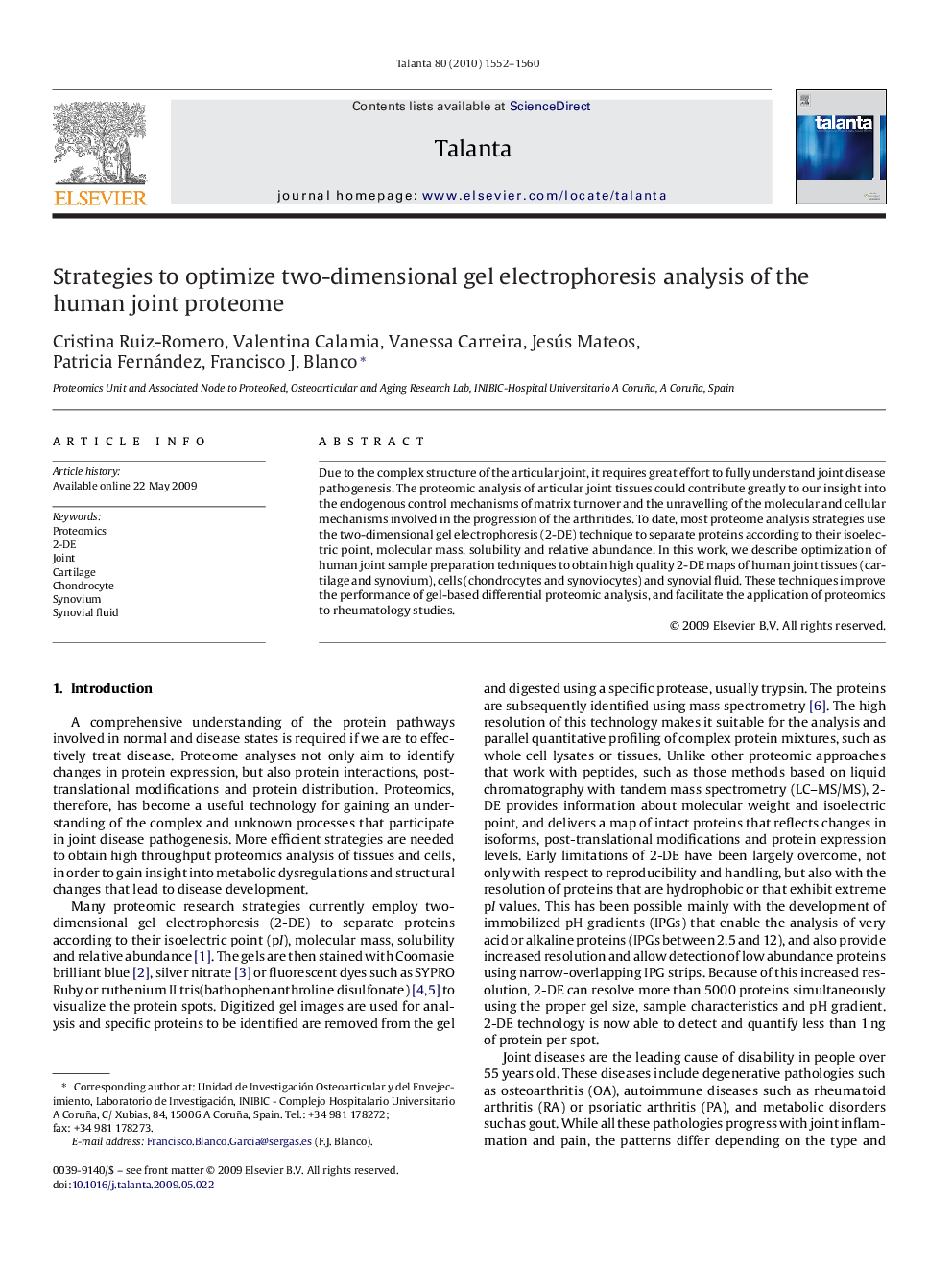| Article ID | Journal | Published Year | Pages | File Type |
|---|---|---|---|---|
| 1243213 | Talanta | 2010 | 9 Pages |
Due to the complex structure of the articular joint, it requires great effort to fully understand joint disease pathogenesis. The proteomic analysis of articular joint tissues could contribute greatly to our insight into the endogenous control mechanisms of matrix turnover and the unravelling of the molecular and cellular mechanisms involved in the progression of the arthritides. To date, most proteome analysis strategies use the two-dimensional gel electrophoresis (2-DE) technique to separate proteins according to their isoelectric point, molecular mass, solubility and relative abundance. In this work, we describe optimization of human joint sample preparation techniques to obtain high quality 2-DE maps of human joint tissues (cartilage and synovium), cells (chondrocytes and synoviocytes) and synovial fluid. These techniques improve the performance of gel-based differential proteomic analysis, and facilitate the application of proteomics to rheumatology studies.
